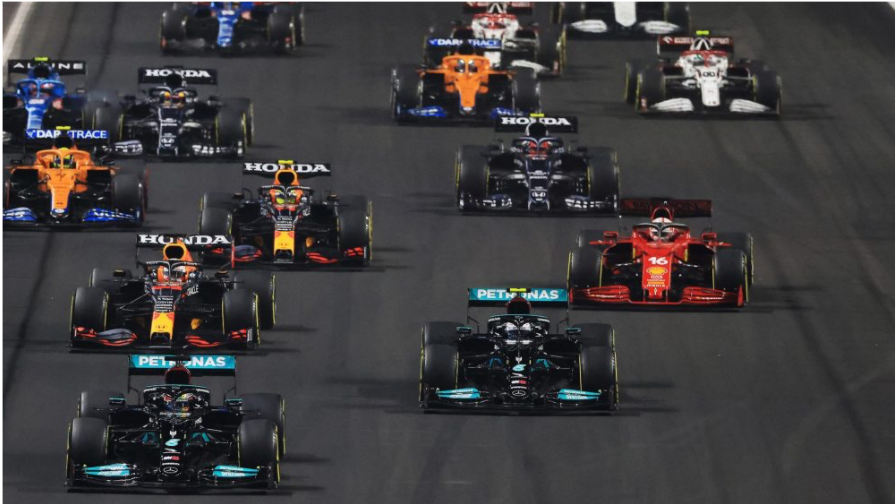Before you say anything, no it’s not just cars going round and round in a circle.
Words by Charlie Batten
F1 is one of those sports that you either get really invested in or you can’t stand it. For example, our own editor-in-chief Georgia Keetch couldn’t think of anything more boring than spending two hours watching cars go round a track whereas I can’t think of anything better to do with my Sunday afternoon. In fact, I will plan out my weekends so that I don’t miss either the qualifying or the race of a Grand Prix which has often led to arguments with my friends who want to do something they deem as much more entertaining. But how does it all work?
F1 consists of 20 different drivers for 10 different teams who race on tracks around the globe in the hopes of winning either the driver’s world championship, which recognises drivers individually, or the constructors championship, which recognises a team’s performance.
So to start off I need to explain the structure of an F1 Grand Prix. It takes place from a Friday to a Sunday and consists of 3 practise sessions on Friday and Saturday morning, qualifying on Saturday afternoon and then the race on Sunday. The practise sessions are an hour-long window for both drivers and teams to one, familiarise themselves with the track as every weekend is a new track and two, to see where the car needs improving or changing to suit the track better. This is where the engineers come in who are responsible for how the car works and how it drives. They are as important to a driver’s success as the driver themself as without a good car, no driver can perform well.
After this, the qualifying session takes place on the Saturday afternoon and is where every driver gets a chance to drive the fastest lap possible. The fastest driver gets pole position and starts first on the grid at the race and the rest of the drivers go in descending order depending on how fast they were.
On Sunday we get the race. Here we get to see which driver is the fastest as they battle each other on track as well as seeing who has the best strategy. Within the race each driver will have to pit stop at least once to change the car’s tyres as the fresher the tyres the quicker the car is and the more control the driver has driving. Also, the team will sometimes decide when the driver pit stops in order to get them in a better position on track for when they leave the pits. It is often these pit stops that make or break a driver’s race which is why it’s important to have a speedy pit crew who can quickly change a driver’s tyres.
At the end of the race, drivers who finish in the top 10 are awarded points depending on where they finish with the maximum points being 25 for the winner. These points go towards each team and driver’s season title which decides who the champions are at the end of the season.
Hopefully this brief explanation of how F1 works will show there’s more to it than just cars going round in a circle and maybe you might even watch the Bahrain GP in a couple of weeks.

